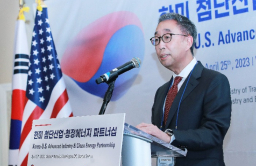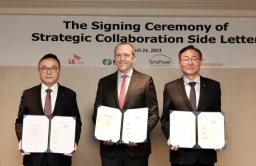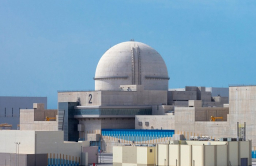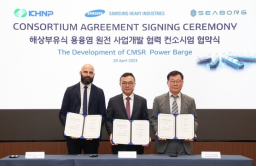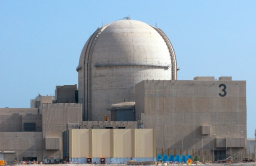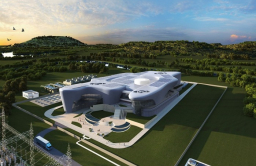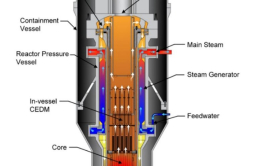-
KOSPI 2577.27 -2.21 -0.09%
-
KOSDAQ 722.52 -7.07 -0.97%
-
KOSPI200 341.49 +0.02 +0.01%
-
USD/KRW 1396 -2.00 0.14%
S.Korea, US advised to cooperate in advanced nuclear power plant
Energy
S.Korea, US advised to cooperate in advanced nuclear power plant
According to S.Korea’s FKI, 80% of the global market is taken over by Russia, China
By
May 03, 2023 (Gmt+09:00)
2
Min read
News+
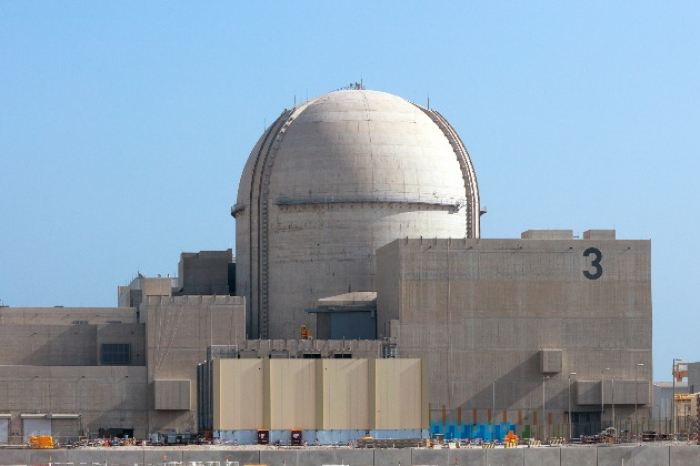
Amid declining exports of nuclear power plants from major countries like South Korea and the US, Russia and China have captured about 80% of the global nuclear power plant export market.
According to the status of export nuclear power plants under construction worldwide last year, out of a total of 34, Russia built 23, China four, Korea four and France three, with Russia holding an overwhelming share (68%). Combining the nuclear power plants under construction by Russia and China totals 27, accounting for approximately 80% of the total.
At the core of Russia's nuclear power plant export competitiveness is the state-owned company Russia State Atomic Energy Corporation (ROSATAM). ROSATOM offers countries considering building a new nuclear power plant a "one-stop package" that includes not only nuclear power plant construction but also financial support, uranium enrichment, operation and maintenance. Based on this, it is estimated that ROSATOM has direct or indirect relationships with 43 countries.
China is also promoting nuclear power plant exports centered around its three state-owned enterprises: China National Nuclear Corporation (CNNC), China General Nuclear Power Group (CGN) and State Power Investment Corporation (SPIC).
They are gaining strength from the economies of scale based on a massive domestic market and strong state-driven overseas expansion policies, such as the Belt and Road Initiative. China has successfully exported its proprietary Hualong One nuclear reactor to Pakistan and recently to Argentina. It has also signed a uranium agreement with Kazakhstan to establish a stable nuclear fuel supply network for domestic and foreign nuclear power expansion.
In contrast to Russia and China, nuclear power plant exports from the US have mostly been the responsibility of private companies. The government's role has been limited to reviewing whether companies exporting nuclear power plants overseas meet non-proliferation standards. The US has also ceded its leadership in nuclear fuel production capabilities to Russia.
The FKI emphasized that Korea and the US should cooperate in exporting advanced nuclear power plants such as small modular reactors (SMR) to third countries. Examining the policy direction of the US government and Congress, the report concluded that the core of restoring US nuclear industry competitiveness lies in the development and export of advanced nuclear power plants, such as SMRs, rather than existing large-scale nuclear power plants.
Write to Jae-Fu Kim at fu@hankyung.com
More To Read
-
May 01, 2023 (Gmt+09:00)
-
Apr 28, 2023 (Gmt+09:00)
-
Apr 26, 2023 (Gmt+09:00)
-
Apr 24, 2023 (Gmt+09:00)
-
Apr 21, 2023 (Gmt+09:00)
-
Apr 04, 2023 (Gmt+09:00)
-
Mar 31, 2023 (Gmt+09:00)
-
Jan 30, 2023 (Gmt+09:00)
-
Jan 18, 2023 (Gmt+09:00)



